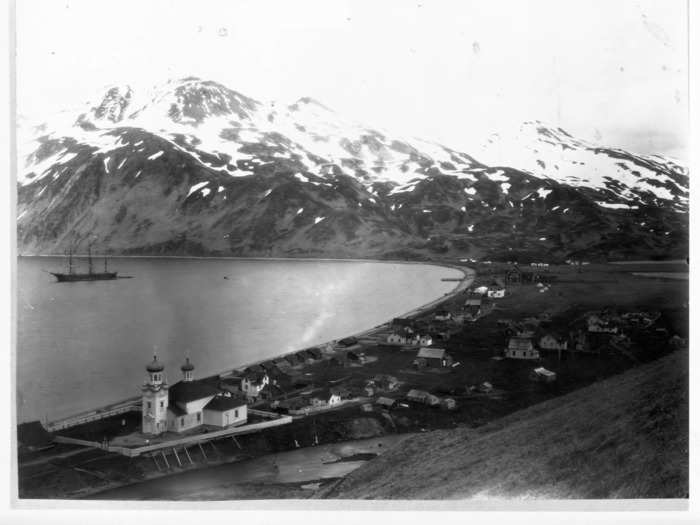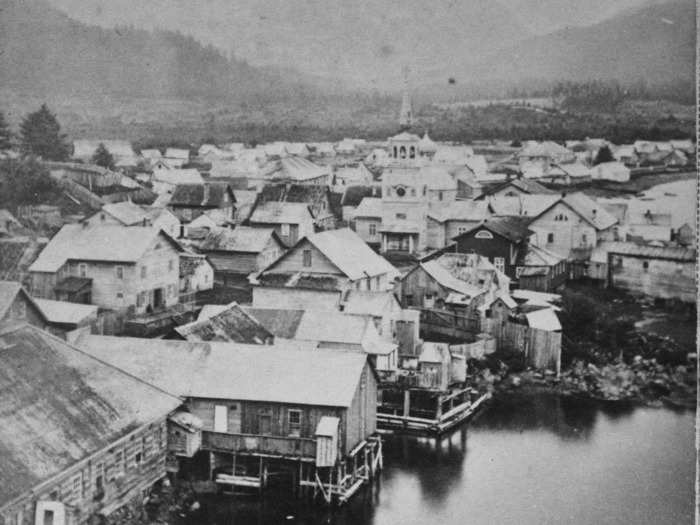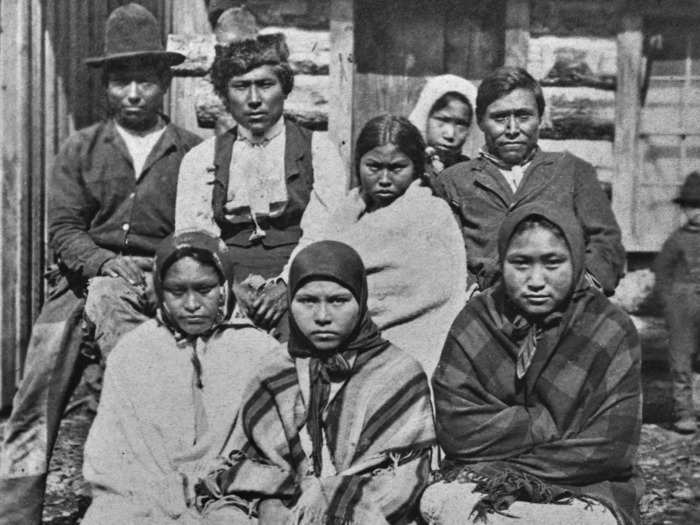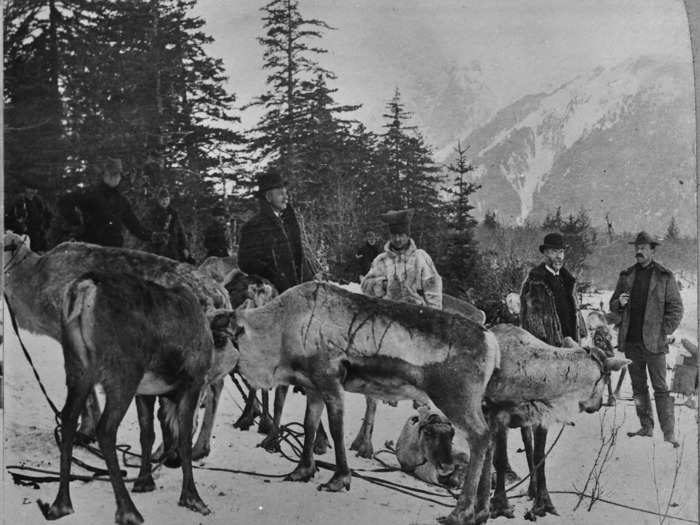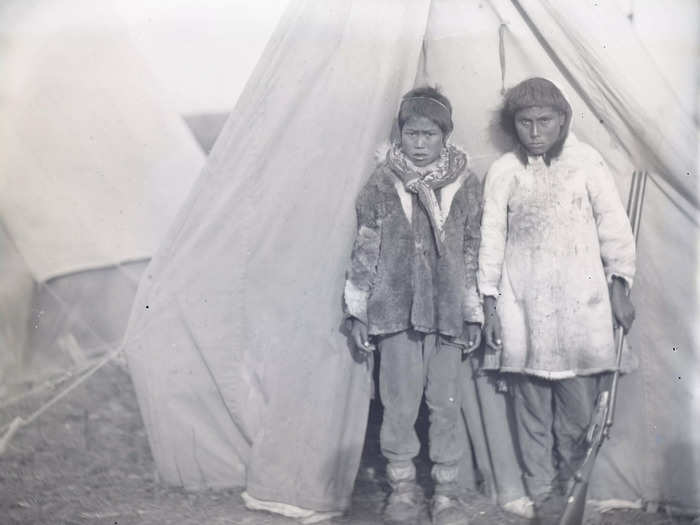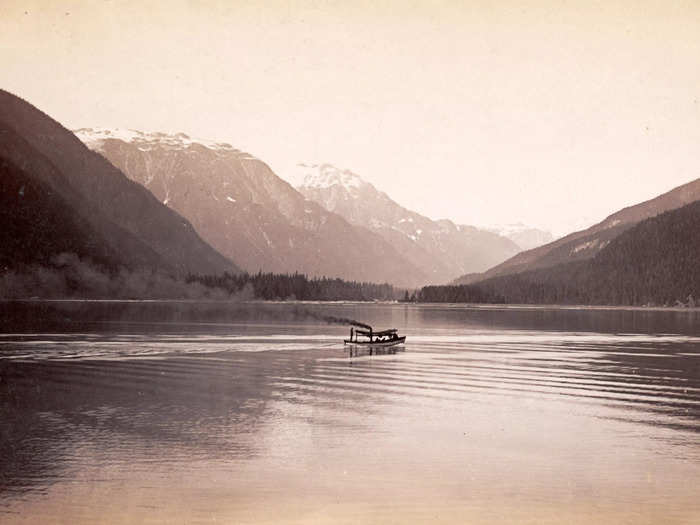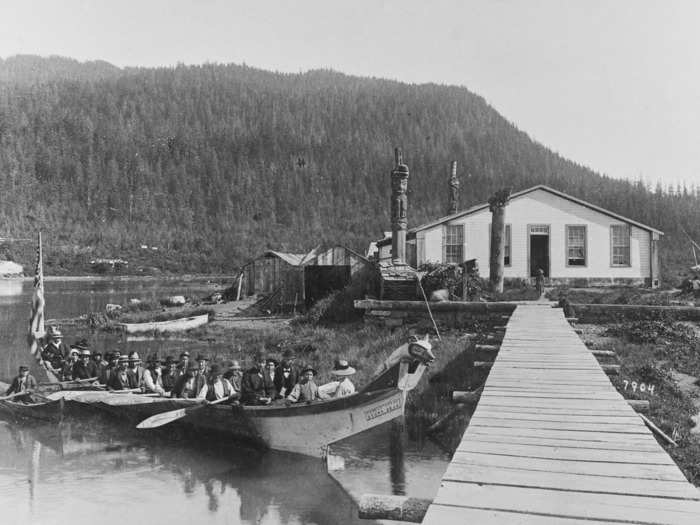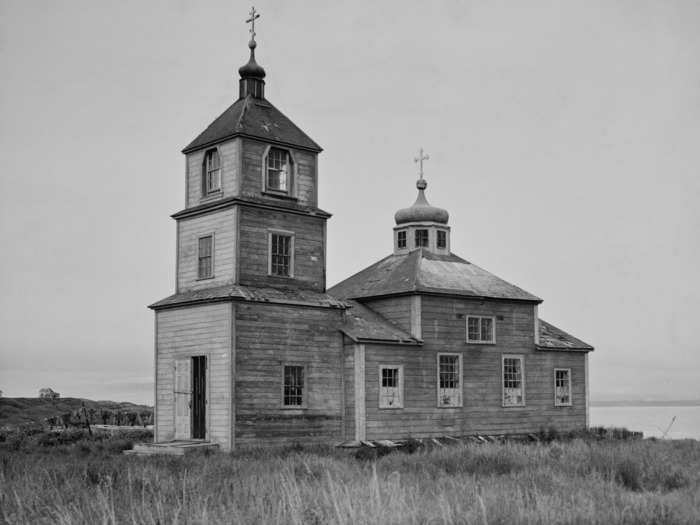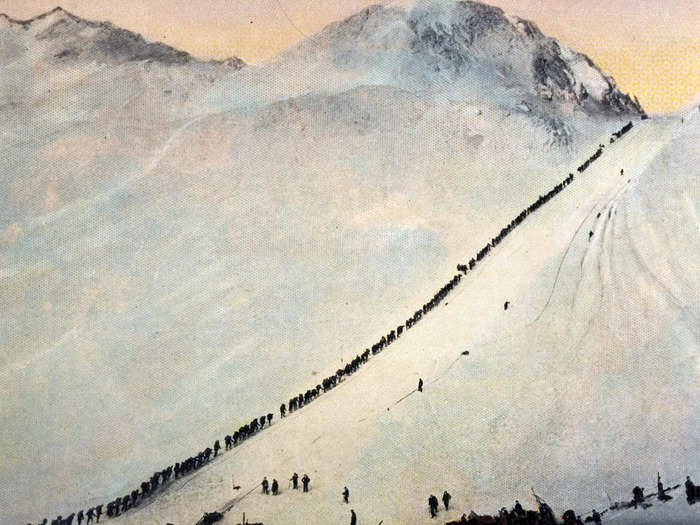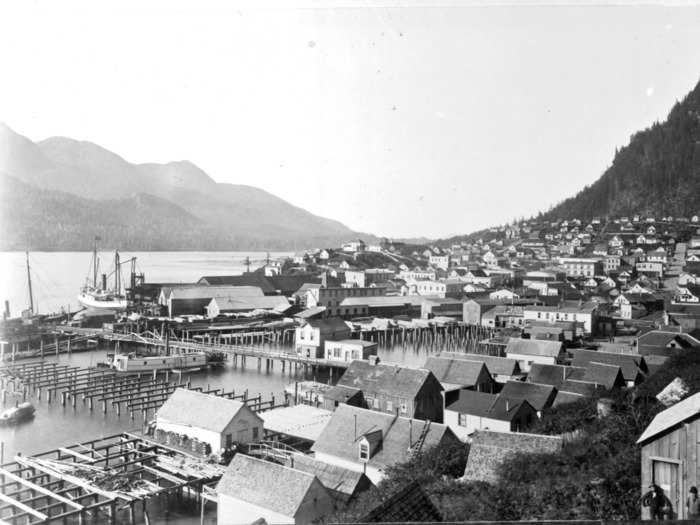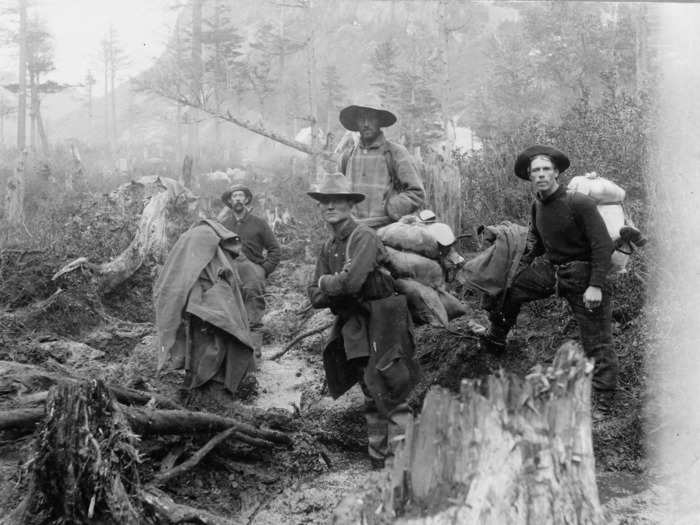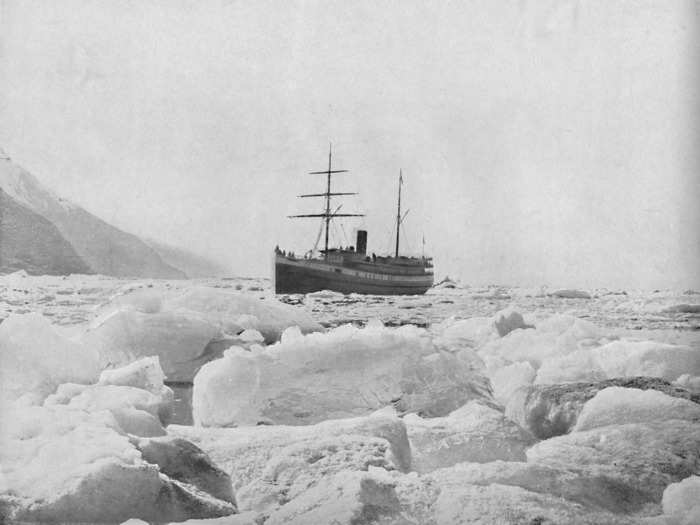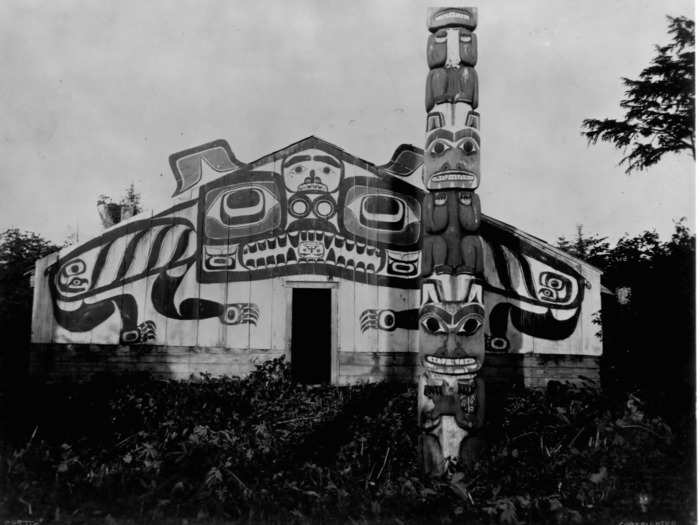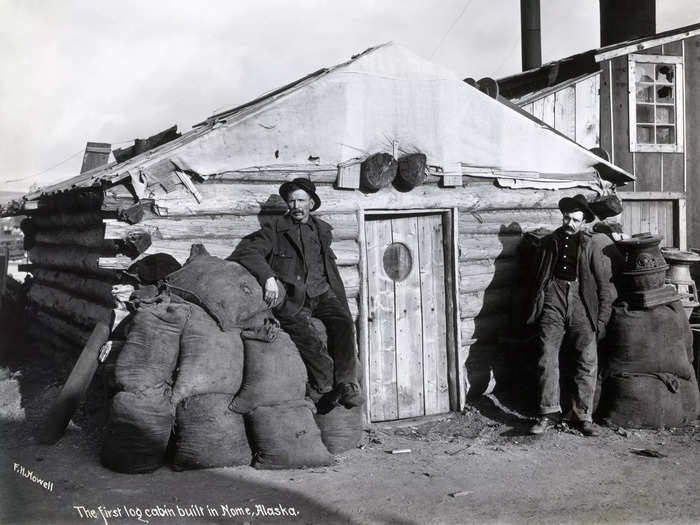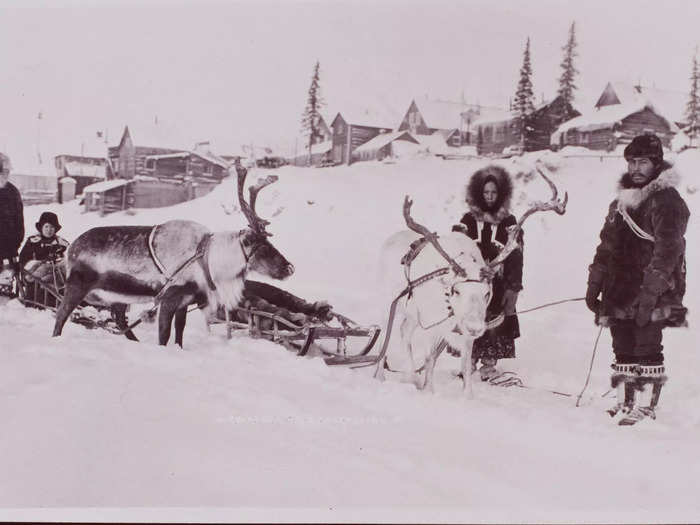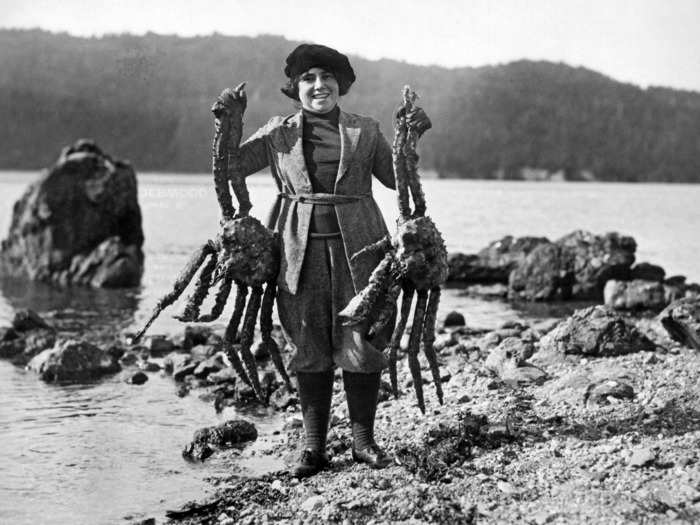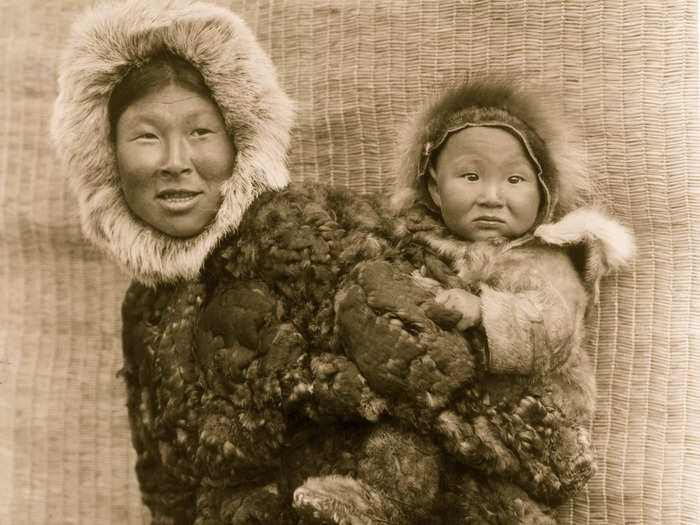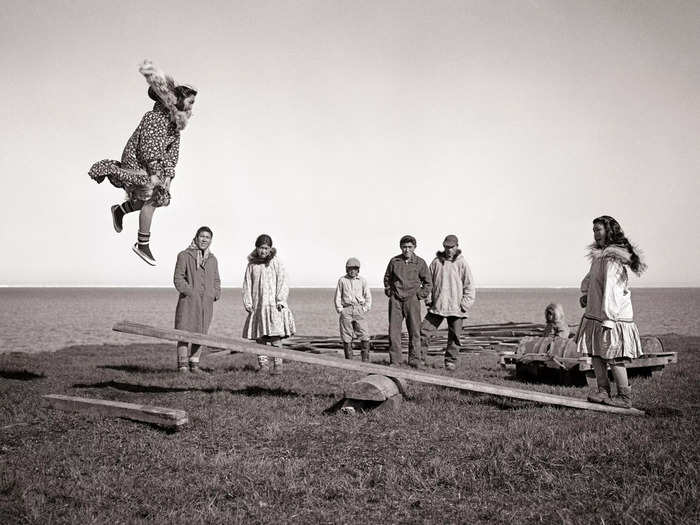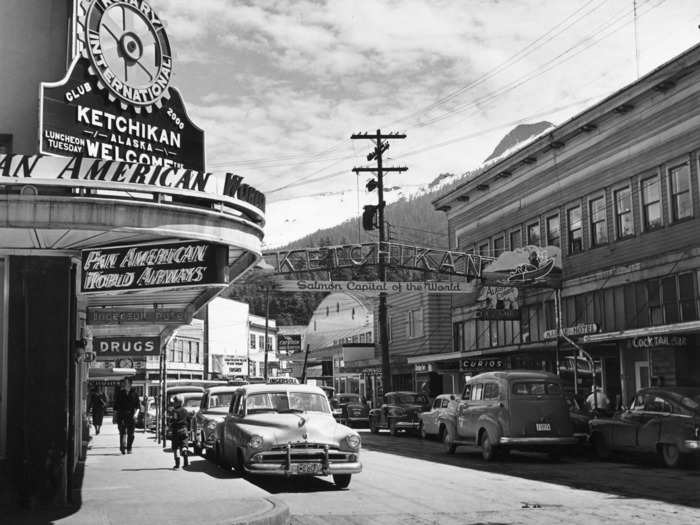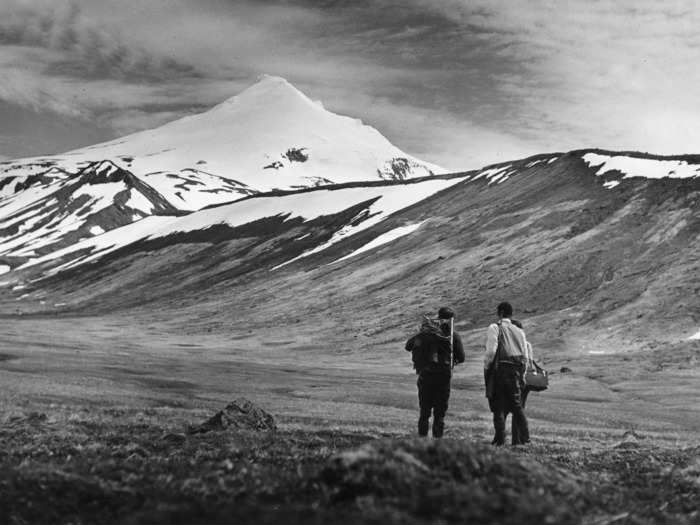circa 1950: A typical scene of the Aleutian Islands with a volcanic cone in the background.J. Malcolm Greany/Three Lions/Getty Images
- Alaska was controversially purchased by the US from Russia in 1867.
- Critics called the transaction "Seward's Folly" after William Seward, the US secretary of state.
Indigenous people have been living in Alaska for thousands of years. One commonly accepted theory was that the first people traveled to North America from Asia via the Bering Land Bridge, although more recent discoveries suggest they made their way by sea.
Russia began colonizing Alaska, and other parts of North America, in the late 1700s, establishing Russian America and making money off the fur trade. But by the 1860s, the fur trade had declined due to over-hunting. In 1867, Russia sold its remaining land to the United States — a check in the National Archives shows Alaska was sold for $7.2 million, or less than 2 cents an acre.
The transaction was made against the wishes of some Native Alaskans, who argued it wasn't Russia's land to sell, according to the Alaska Native Foundation.
US critics dubbed the purchase "Seward's Folly," named for then-Secretary of State William Seward, because they felt the land, which they called an "icebox," was useless. Three decades later, the Klondike Gold Strike brought thousands of migrants to the territory.
Alaska officially became a state 92 years after the transaction, in January 1959, making it the 49th state. Hawaii became the 50th state that same year. Now, Alaska is a popular tourist destination, with thousands of people traveling there via cruise each year.
These vintage photos show what Alaska looked like before it became part of the United States.
Late 1800s: This is the town of Unalaska, on the island of the same name. It is still the main population center of the Aleutian Islands.
The town of Unalaska, on Unalaska Island, in the last years of the 19th century. Library of Congress/Corbis/VCG/Getty Images
1880: A view of Sitka, Alaska. This city was under Russian rule until 1867.
Sitka, Alaska. Archive Photos/Getty Images
1880: Alaska was populated by many Native tribes for thousands of years. Today, the two biggest tribes are the Yup'ik and the Tlingit.
A portrait of Native Alaskans in 1880. Continent Stereoscopic Company/Graphic House/Archive Photos/Getty Images
Circa 1880: Sheldon Jackson, an American minister, traveled to Alaska following its purchase by the United States in 1867. Here he is in Haines, Alaska.
American clergyman Sheldon Jackson with men and government reindeer in Haines, Alaska, circa 1880. Keystone View Company/Graphic House/Archive Photos/Getty Images
1884: These two Inuit children were part of the exploration of the Kobuk River in northern Alaska.
Two Inuit children in front of a tent, one holding a rifle, around 1884. Heritage Art/Heritage Images/Getty Images
1887: A ship sails the Salmon River under the watchful eyes of the mountaintops.
The Alaskan Salmon River valley in 1887. USA Coast Survey/Royal Geographical Society/Getty Images
1890: A canoe called Brown Bear carries a funeral party to docks at Wrangell Island.
A Tlingit canoe named Brown Bear carrying a funeral party arrives at Fort Wrangel on Wrangell Island in the Alexander Archipelago, Alaska, 1890. William H. Partridge/Graphic House/Archive Photos/Getty Images
1895: Even decades after the US purchased Alaska from Russia, structures built by the Russians remained for years, like this Russian Orthodox Church.
A Russian Orthodox Church, dating from when the region was under Russian rule in St. Michael, Alaska, circa 1895. FPG/Archive Photos/Getty Images
1896: The Klondike Gold Rush started in 1896. Thousands of prospectors trekked through the Chilkoot Pass, seen here, leading from Dyea, Alaska, to Bennett Lake, Canada.
Long line of gold prospectors climb the stairs cut into the ice on the Chilkoot Trail through Chilkoot Pass during the Klondike Gold Rush. Michael Nicholson/Corbis/Getty Images
1897: This is what Juneau looked like in 1897, nine years before it was chosen as the territory's capital in 1906.
Juneau, Alaska, circa 1897. Lightfoot/Archive Photos/Getty Images
1897: Prospectors continued searching for gold for the rest of the Klondike Gold Rush, which ended in 1899. The Nome Gold Rush then lasted from 1899 to 1909.
Four prospectors pose on a trail in Alaska in 1897. Universal History Archive/UIG/Getty Images
1897: Sailing through the icy waters of Glacier Bay, which is now a national park, could be dicey.
A steamer sails through Glacier Bay, Alaska, circa 1897. The Print Collector/Getty Images
Source: National Park Service
1899: Totem poles like this one, seen outside an Alaskan lodge, tell the story of the family or tribe that constructed the pole.
A totem pole guards the entrance to an elaborately decorated lodge in Alaska in 1899. E.H. Harriman/Library of Congress/Corbis/VCG/Getty Images
1900: According to the handwritten note on this photo, this was the first log cabin built in Nome, Alaska, amid the gold rush.
The first log cabin built in Nome, Alaska. 1900 Nowell/Getty Images
1900: Reindeer have been inextricably linked with the Arctic and those that live in and around it for thousands of years.
Two men and two women with reindeer hitched to sleds, 1900. Michael Maslan/Corbis/VCG/Getty Images
1926: Photographer Frank Kleinschmidt and his family moved to Alaska during the gold rush. This is his wife holding two huge Alaskan king crabs.
Mrs. Frank Kleinschmidt holds up two giant Alaskan crabs during her husband's expedition into the arctic wilderness on May 31, 1926. Underwood Archives/Getty Images
1929: A mother carries her child on Nunivak Island. Today, the entire island only has one town, Mekoryuk.
Circa 1929: A mother carries her child. Buyenlarge/Getty Images
1949: A group of Alaskan teenagers play what looks like an extreme version of a seesaw.
Alaskan children and teens playing a game of jump-board in 1949. ClassicStock/Getty Images
1950: By 1950, the city of Ketchikan had begun calling itself the Salmon Capital of the World.
circa 1950: A street in Ketchikan, Alaska, the self-styled Salmon Capital of the World. J. Malcolm Greany/Three Lions/Getty Images
1950: Two explorers take in the views of the Aleutian Islands, nine years before Alaska became a state.
circa 1950: A typical scene of the Aleutian Islands with a volcanic cone in the background. J. Malcolm Greany/Three Lions/Getty Images

